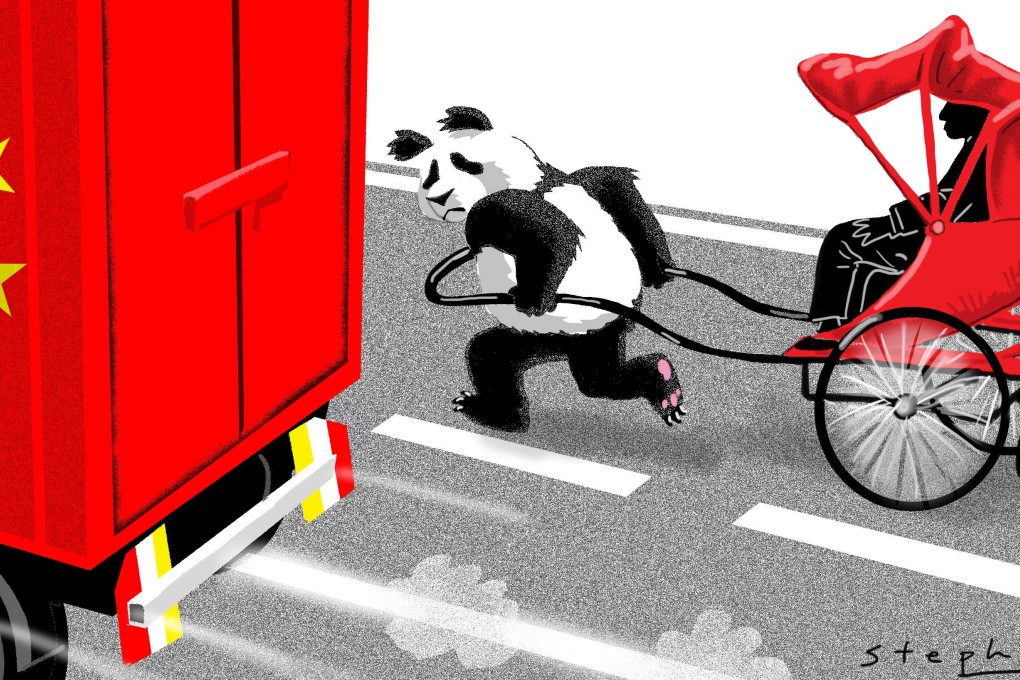How China has gone from panda diplomacy to New Silk Road smart power
Andreea Brînza says Beijing’s genius lies not in its Belt and Road development plan per se, ambitious as it is, but in its branding of the initiative to increase its appeal to the world


China has the power, now can ‘One Belt, One Road’ take it down the path to glory?
The Chinese Middle Kingdom was governed for centuries by Confucian thought, which was reflected in every aspect of daily life, from society to politics, from economics to foreign affairs. Confucius pointed to a hierarchical society as being necessary to maintain order in the country. Extrapolating from this Chinese thought and linking it with the idea of guanxi (connections), we will obtain the perfect environment for developing a smart power strategy with Chinese characteristics.
During the Tang dynasty and centuries later, after the 1950s, China used its pandas as a soft power strategy to improve its relations with countries all around the world. Pandas were once presented as gifts to smooth China’s relations with countries such as the US but, after the 1980s, they were only lent to friendly countries.

How baby panda Bei Bei became diplomat in US-China relations
Nowadays, pandas are used not so much to catch the eyes of governments, but to impress netizens who cannot get enough of videos of their sweetness. Still, the animal remains one of the most important Chinese symbols and a great icon of Chinese soft power. Step by step, however, the chubby creatures are being replaced by another tool of foreign diplomacy, also with historic roots: the New Silk Road diplomacy, or the Belt and Road diplomacy.
But what is the Belt and Road initiative about? Is it a maze of roads, railways and pipelines that connects Asia with Europe? Is it a Chinese strategy to lure countries with investments and to smooth the transition to a multipolar world? In fact, it is a combination of roads, strategies, economics and soft power. Like the ancient Silk Road, the new one isn’t in fact a real road. The old Silk Road was a chain of people who bought and sold goods along a corridor of trade that started in Xian (西安) and ended in Europe. Those merchants didn’t travel large distances on this “road”, but they were the links in the big supply chain of the Silk Road. Nowadays we don’t have caravans and merchants, but we have businessmen, companies, markets, raw materials and people, which we can find alongside the new Silk Road.

‘One Belt, One Road’ set to make bigger impact than US’ Marshall Plan
The “One Belt, One Road” project was framed by President Xi Jinping ( 習近平 ) during his visits through Asia in 2013, and, from that point, it became a Chinese strategy for branding the avalanche of investments and transport projects that China envisioned in Asia and beyond (Europe and Africa). Even though it was depicted by Xinhua as a maze of terrestrial and maritime roads, the Belt and Road initiative is more than that: it is a smart power strategy with Chinese characteristics. Covering a large amount of investments and projects, from railway projects in Asia to aviation routes between Europe and Asia, from the Gwadar-Kashgar Economic Corridor to some of China’s construction activities in the South China Sea, the “One Belt, One Road” initiative became an umbrella for all Chinese investments outside the country and the perfect vehicle to propagate China’s soft power strategy.